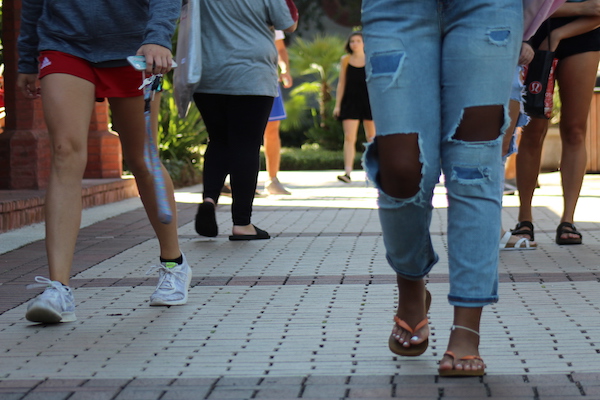By Bryson Meadows | gargoyle@flagler.edu
Walking onto the Flagler College campus on Aug. 25 for move-in day was much more of a culture shock than I expected. Growing up in Central Florida, there was no shortage of skin tones, ethnicities, or cultures.
However, the same cannot be said for Flagler College. Take a walk through campus and it quickly becomes clear the campus lacks diversity. And some students here are certainly eager to acknowledge it.
The first real sense of diversity I noticed on campus was at club night when I was first introduced to Flagler’s Black Student Association, a group focused around creating diversity and the acceptance of all cultural and racial backgrounds. Wanting to broaden my own knowledge of the world of black activism and the fight for equality, I eagerly awaited our first meeting. Sitting in that group, I was quick to catch on to the contrast between the definition of diversity from the administration and the definition from the students.
Phaedra Dejarnette, a sophomore at her “dream” school and member of BSA, is passionate about conversations of diversity on campus and said while Flagler “may be talking the diverse talk,” they’re not “walking the diverse walk.”
As a female student of color, she acknowledges that the liberal arts institution is of diverse thought, but when looking at the ratio of white students to students of color per class, not diverse people. As of Fall 2017, the college enrolled 2,591 students; 98 of which were black or African American.
Rachel Branch, director of admissions, is very cognizant of the imbalance of students of color to their caucasian counterparts.
“Going away to school has to really be worth it for these kids,” Branch said. “There are so many problematic, front-facing aspects that have to be acknowledged. We don’t want students coming here and thinking, ‘Am I looked at differently?'”
Perhaps there’s a larger reason for the gap between the number of white students and students of color.
There seems to be a consensus across the board that not enough is being done to make a college education accessible for prospective students of color across who don’t share the same opportunities due to the nation’s history of active oppression towards people of color.
According to freshman Sam Sawney and BSA secretary, Nigel Soto, many students of color are having to compete with their peers who grew up with the resources to get into private institutions, whether it be a higher socioeconomic class or a familial history of higher education.
“There tends to be issues in the home life of minority students because they don’t have the same income opportunities for the entire family,” Soto said. “So if you’re not getting [a higher education] with a full ride, it’s pretty difficult to pull it off in general, and we all know how hard a full ride is unless you’re also pulling off athletics, and that tends to be the reason why there are a lot of minority students at Flagler.”
Even alumni, like class of 2006 lawyer Valeta Cameron, understands that “barriers such as lack of resources, lack of knowledge about opportunities and lack of support (ranging from financial support to motivational support) keep many people of color from pursuing higher education.”
In truth, Flagler College does talk frequently about diversity on campus, evident in the Quality Enhancement Plan Committee’s efforts and the requirement for students to participate in diversity-related co-curricular events.
Granted, there are some who are not as in-tune with the real issues as they think. There’s a shared feeling between students of color on campus, especially within the BSA, that people talk more at students of color versus talking about students of color. Many of these students have seen other students of color leave Flagler College specifically due to feeling as though they’re on the “outside.”
But there’s hope.
Fearless leaders, like Rebecca Guerrier, senior and president of BSA, are more than happy to host conversations about the struggles of students of color both citywide and nationwide and are actively doing so. Those such as Guerrier have faced the struggles, the colorism, the racism, the utter hatred and will do everything they can to make sure our future generations don’t have to.
“Right now, opportunities are not equal for people of color trying to get a higher education,” Guerrier said. “But through things like the BSA and diversity programs and advocating for successful people of color, we want to pave the way for those who come after us.”



Be the first to comment on "Diversity on campus: a long way to go"